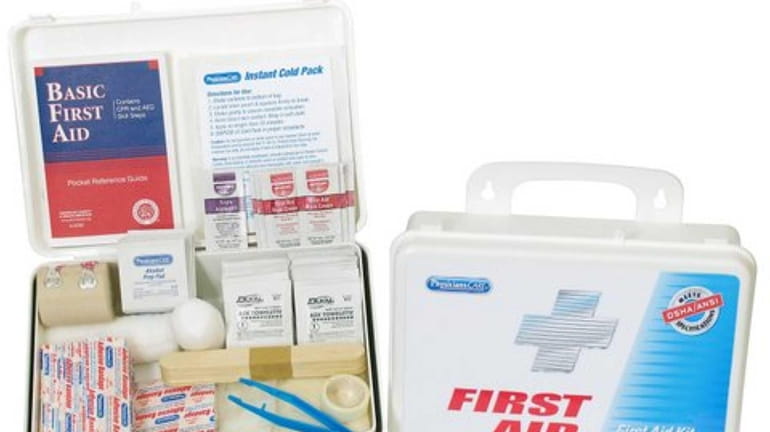Packing your own first aid kit: What to include

While there are ready-made kits, like this Physicians Care First Aid Kit, that are available for purchase online and at stores everywhere, some people may choose to pack their own kits, allowing them to tailor it to their family’s individual needs. Credit: Handout
With warmer weather finally arriving on Long Island, people are flocking to beaches, parks and other outdoor locations for some fun and fresh air.
But with summertime activities also come those inevitable bumps, cuts, scratches and bug bites. To combat these annoying maladies and more, the American Red Cross recommends keeping a stocked first aid kit at home and in your car.
While there are ready-made kits that are available for purchase online and at stores everywhere, some people may choose to pack their own kits, allowing them to tailor it to their family’s individual needs. The following are the Red Cross’s recommendations of what to keep handy, along with a few of my own personal picks from years spent working outdoors as an EMT.
2 — 5”x9” absorbent compress dressings
25 adhesive bandages (assorted sizes)
1 — 1” width adhesive cloth tape
5 antibiotic ointment packets
5 antiseptic wipe packets
2 packets of aspirin (81 mg each)
1 blanket
1 breathing barrier (with one-way valve) — for use when performing CPR
1 instant cold compress
2 pair of non-latex gloves (size: large)
2 hydrocortisone ointment packets
Scissors
1 — 3” wide roller bandage
1 — 4” wide roller bandage
5 — 3”x3” sterile gauze pads
5 — 4”x4” sterile gauze pads
Oral thermometer (non-mercury/nonglass)
2 triangular bandages
Tweezers
First aid instruction booklet
Meghan’s picks:
5 bug bite relief wipes
2 individual Benadryl packets
1 bottle of SPF 30 (UVA/UVB protectant) sunscreen
Flashlight, with batteries
Bottle of water
5 packets of burn cream ointment
6 alcohol prep pads
Emergency contact numbers (local fire department, poison control, etc.)
Once you’ve packed your first aid kit and stored it in an easily accessible location, be sure to check your kit often, restock depleted items and change out what has expired as necessary. Additionally, you may want to consider keeping a list of personal, prescribed medications in your kit to give to first responders in case of a true emergency.
Purchasing or creating more tailored first aid kits for activities like boating and hiking may also be a good choice, as injuries and medical needs may vary depending upon your activity. Ultimately, whether or not it’s used, a well stocked first aid kit is a key tool to any successful outdoor outing.
What do you keep stocked in your first aid kit? Let us know in the comments field below.
